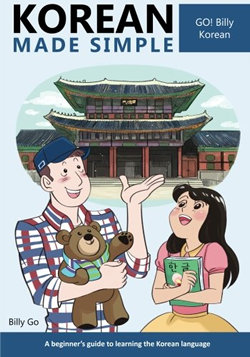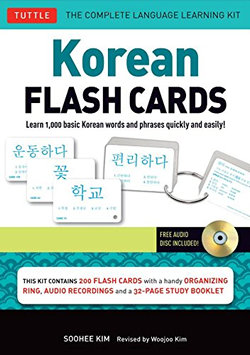Hangul is the official alphabet of the Korean language and it’s used in both South and North Korea. The alphabet was created in the year 1443 in the Joseon Dynasty.
The Korean alphabet is made up of 19 consonant letters and 21 vowel characters for a total of 40 main letters. There are some obsolete characters and combination characters as well but the main alphabet is 40 letters. Unlike English however the letters are combined into blocks of usually 2 to 3 characters for each syllable. “Han” for example isn’t written as “ㅎㅏㄴ” it’s written as “한”
The name of the Korean alphabet, Hangul (한글) means great script in Korean. Han (한) means great and Geul (글) means script.
The most interesting feature of the Korean Alphabet is the design of the letters. The shape of each letter is designed after the features of the sounds they represent. Consonants are based on the shape your mouth makes when you pronounce them while vowels are made from easy to identify horizontal or vertical lines. The character ㄱ for example is the shape your toungue takes when you make a “g” sound.
Each consonant has its own name. ㄱ for example is called giyeok (기역). The vowels are just named after the sounds they make like “ah” for the vowelㅏ.

About me
My name is Haneul. I was born into a Korean family but grew up in Canada. I never really learned Korean until I was in my 20s when I decided to teach myself so I could communicate better with my extended family.
Today I’m fluent in Korean and I live in Seoul South Korea. I built this website to help other people learn Korean like I did.
My hobbies include reading, watching Korean dramas, listening to K-Pop and cooking all kinds of different food.
 Giyok (기역):
Giyok (기역): Nieun (니은):
Nieun (니은): Digeut (디귿):
Digeut (디귿): Rieul (리을 ):
Rieul (리을 ): Mieum (미음):
Mieum (미음): Bieup (비읍):
Bieup (비읍): Siot (시옷):
Siot (시옷): Ieung (이응):
Ieung (이응): Jieut (지읒):
Jieut (지읒): Chieut (치읓):
Chieut (치읓): Kieuk (키읔):
Kieuk (키읔): Tieut (티읕):
Tieut (티읕): Pieup (피읖):
Pieup (피읖): Hieut (히읕):
Hieut (히읕): Ssang Giyok (쌍기역):
Ssang Giyok (쌍기역): Ssang Digeut (쌍디귿):
Ssang Digeut (쌍디귿): Ssang Bieup (쌍비읍):
Ssang Bieup (쌍비읍): Ssang Siot (쌍시옷):
Ssang Siot (쌍시옷): Ssang Jieut (쌍지읒):
Ssang Jieut (쌍지읒): a
a eo
eo o
o u
u eu
eu i
i ae
ae e
e ya
ya yeo
yeo yo
yo yu
yu yae
yae ye
ye wa
wa wae
wae wo
wo we
we oe
oe wi
wi ui
ui

 Ka
Ka Sa
Sa Mo
Mo Ri
Ri Tal
Tal Neun
Neun Ram
Ram Mot
Mot a
a yo
yo eum
eum yeok
yeok




